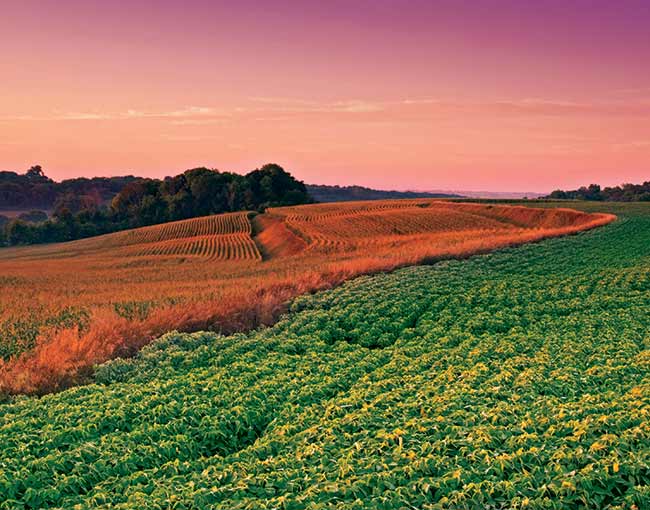On September 13 and 14, Thompson Coburn’s Agriculture & Food group hosted a hands-on seminar for professionals in the food and agriculture industries. The program – “From The Ground Up: A Hands-On Seminar for Agribusiness Professionals” – was designed to give busy professionals a deeper understanding of the challenges facing farmers. The ultimate goal of the program was to help those professionals tackle the complex business issues they face with an eye toward how their decisions affect (and are affected by) farming.
Program participants had the opportunity to step out of their corporate role for the day, learn about numerous aspects of farming from experienced professionals and play the role of a farmer working to build and run a Midwestern corn or soybean farm.
As a participant in the program, I was fortunate to be able to connect with a number of agribusiness professionals over the two-day program and learn how this class impacted them and broadened their awareness. We all agreed that we learned a tremendous amount of information in just two days, but if I had to synthesize our key takeaways, I would put them in three categories.
First, farming is a very sophisticated business.
• Farmers face myriad decisions every crop year that could dramatically affect yield and the ultimate success of their business. We all know that farmers must decide, at a minimum, what crop(s) to plant and where, but that decision is just the tip of the iceberg, and even that decision is not an easy one. What seed (or variety of a seed) to plant is based on a host of factors, including past performance of the variety, soil type and drainage, resistance of the variety to common pests and fungi, whether the variety is recommended by the local extension agent or cooperative, crop rotation needs, market projections for various commodities, product availability, price discounts on all inputs, and many other factors. Farmers must also decide how they want to market (i.e., sell) their crop once it’s harvested. Should they lock in a price early in order to avoid potential future price decrease, or should they wait and “spot” price their crop at harvest. But between buying and selling there are dozens of other decisions farmers must make, and they only get one shot to make each decision.
Second, farming is also a risky business.
• There are just as many unpredictable variables to plan for as there are choices to make. Yield and crop damage can be affected by weather patterns, climate change, disease and pest outbreak, pesticide drift from nearby fields, soil health and conditions, irrigation, new technologies, and quality of planting & harvest GPS equipment. Sales price and profit margins can be affected by international demand, trade disruptions, bumper crops, regulatory changes, land values and rent increases, changes in crop insurance and price support programs, and increase or decrease in input costs. The wide array of risk-factors and variables affecting yield and price is enormous and each factor and variable must be considered by the farmer.
And last, but certainly not least, technological advances have — and always will — greatly impact farming practices.
• The invention of biotechnology-derived seeds and their rapid and wide-scale adoption has radically increased crop yield and has affected nearly every aspect of farming. The current technological revolution—often called precision agriculture—is rapidly being adopted by farmers and agribusinesses who desire to use real time weather, soil, and other data to decrease input costs and increase yields. Stay tuned to Thompson Coburn’s Food Fight blog for updates on how technology intersects with the law.
To learn more about this program, and to see how this program could benefit your company, contact one of our agriculture & food professionals



